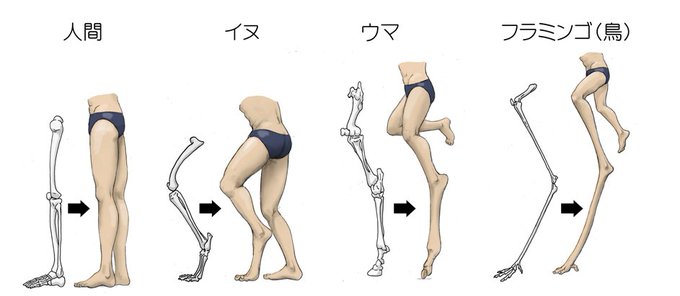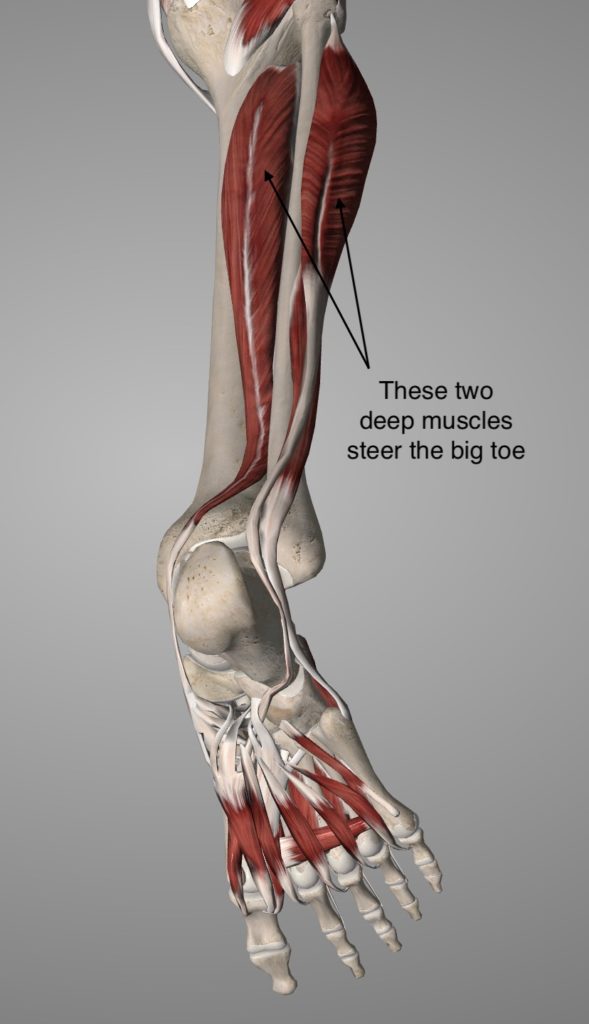When we think of feet we usually consider them as an integrated whole – the foot, which we put in a shoe. However, this is misleading as there are multiple functions within the foot, that are perhaps underutilized when wearing footwear. This post examines three unique primary and one secondary foot functions from the perspective of the associated structural (bone) attributes.
Focusing on foot exercises and activities to activate each of these unique functions is highly recommended. The more you play with the function, the more vital and resilient the structure becomes and the more capable it can dynamically support the body. There are example exercises at the end of this post.
OVERVIEW
- Each model is a functional dissection, the bony structure is extracted by its functional role. Only the bones having a structural role within the specific function are represented.
- The bones are delineated from the soft tissue, illustrating the compressional load-lines. The tensional attributes need to be visualized.
- These models challenge the assumption that all foot functions/roles uniformly employ the foot’s structural attributes and exploit a conceptual “arch”. An arch is identified in only one, possibly two of the functions presented here.
Stance
( Vertical Stabilization: Compression > Tension)
- Compression is distributed equally up through the big toe, side of the foot, and heel.
- A tripod is an example of a similar compressional structure.
- In this dynamic, there are three arches in the foot. The 2nd and 3rd toes play a minimal role. The arches are called Transverse, Medial, and Lateral.
- If the plantar fascia has a low tone (dropped arch) the postural reflexes(Postural Extension, etc.) are inhibited. These motor function reflexes extend to the base of the skull.
- In this functional role, the body’s reflexes are passivated.
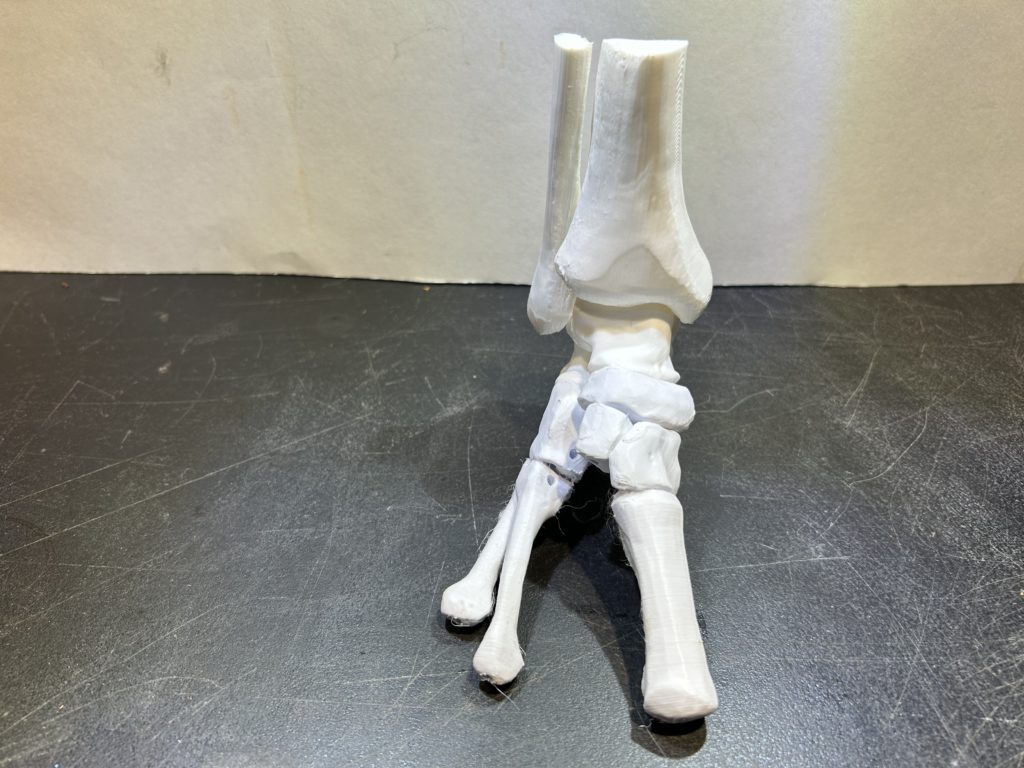
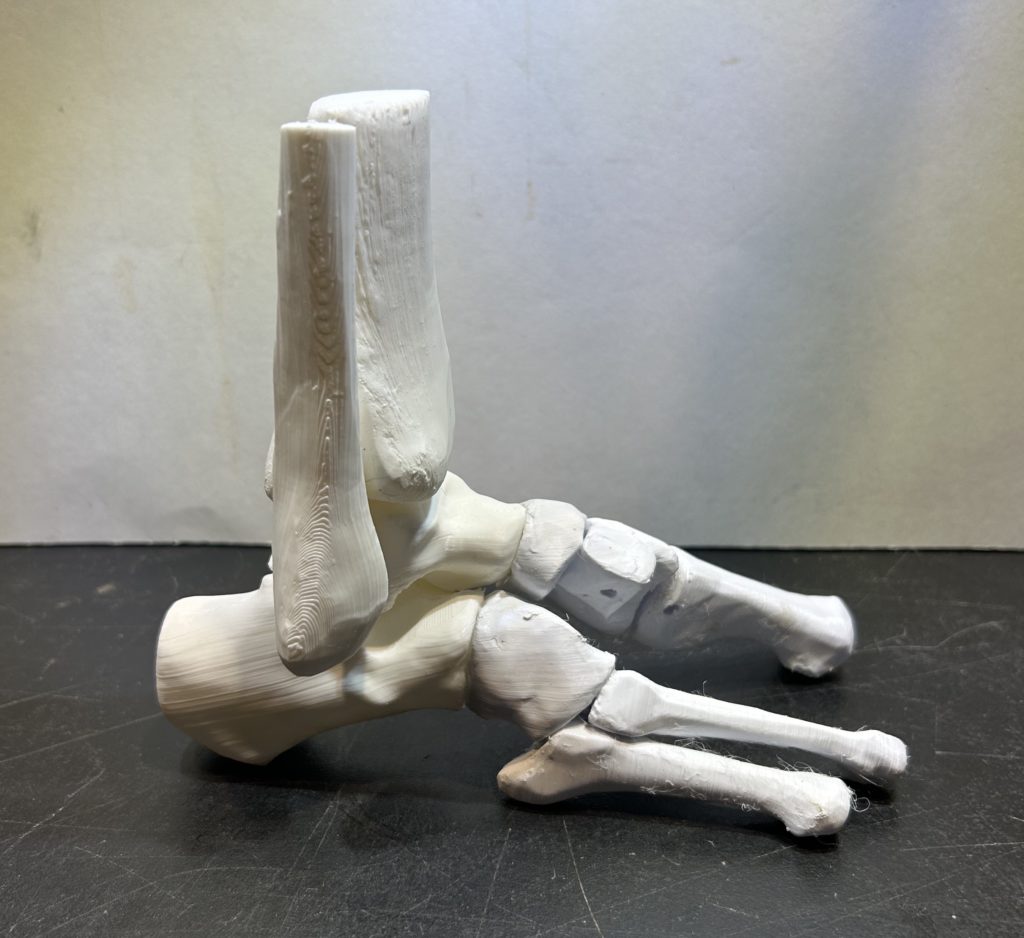
Forefoot/Ball Stance/Gait
(Forward Movement: Tension > Compression)
- The body is pushed forward by the big toe.
- Tension is carried across the sole and up the back of the leg.
- The heel acts as a pully for leverage changing the force vector.
- There is no apparent “arch” structure in this dynamic.
- The outside of the foot does not participate.
- This structural attribute is sometimes described as “the root of the foot”.
- The postural reflexes (Postural Extension, etc.) are activated in Forefoot Gait.
- Note how compressional force is concentrated into a single bone as it is translated up the leg.
- The Foot Tendon Guard and Trunk Extension reflexes are activated in this role.
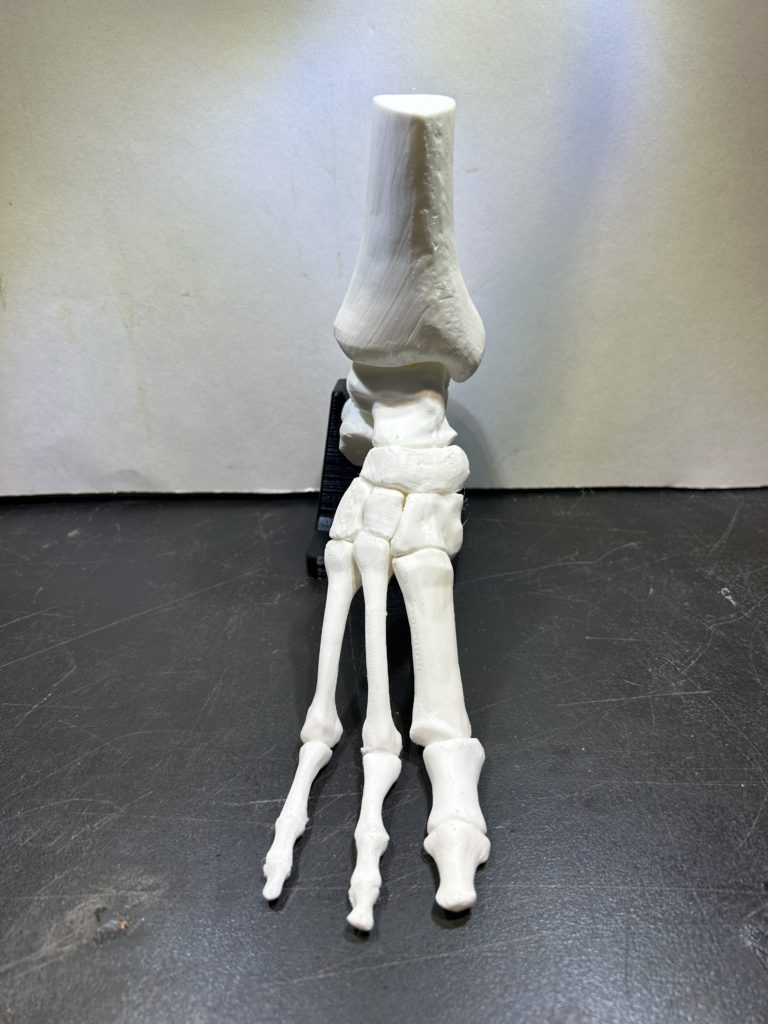
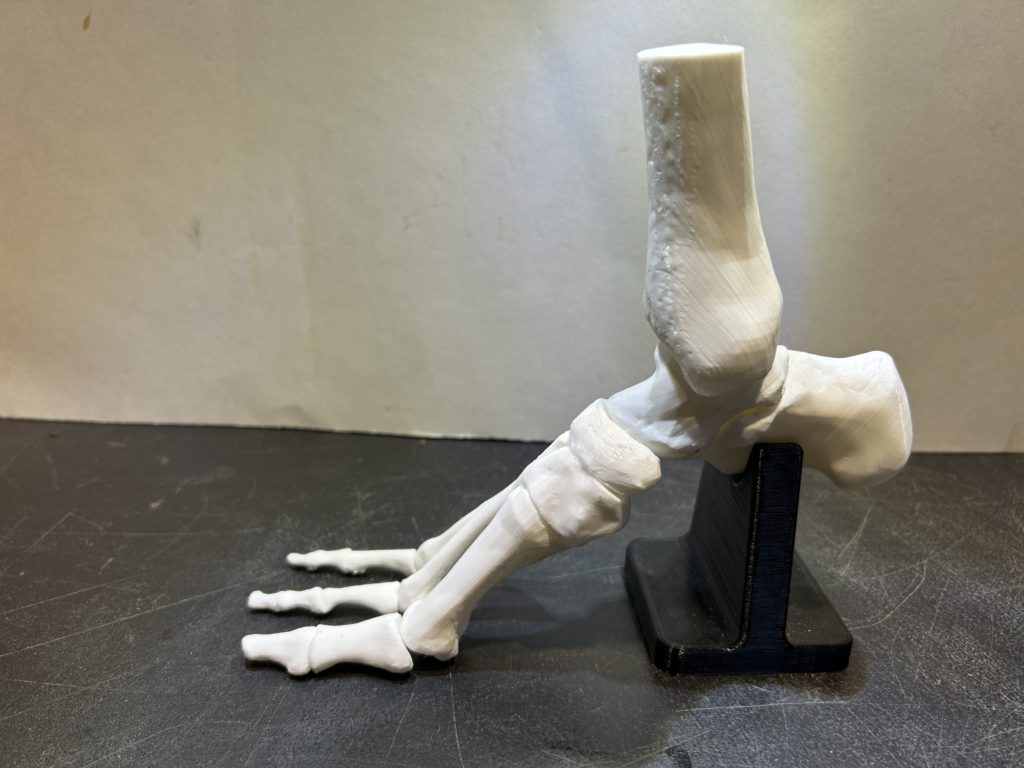
The Forefoot is a highly adaptive mechanism of gait:
Human / Dog / Horse / Flamingo
Variances in Forefoot for Shock Absorption and Leverage in Gait
Satoshi Kawasaki
Lateral Control
(Lateral Stabilization: Compression > Tension)
- The outside edge of the foot makes compressional contact with the ground. There is limited shock absorption in this system.
- It is the mechanism to inhibit tipping to the side. When this is not fully deployed it is easy to roll off of the outside of the foot, twisting the ankle.
- The Fibula (outside bone of the lower leg) exerts downward force into the outside toe, with the 4th toe in support, preventing the foot from collapsing inward.
- The first three toes with the associated bones play no role.
- There is no apparent “arch” in this mechanism.
- The Babinski and Leg Cross Flexion reflexes are activated in this role.
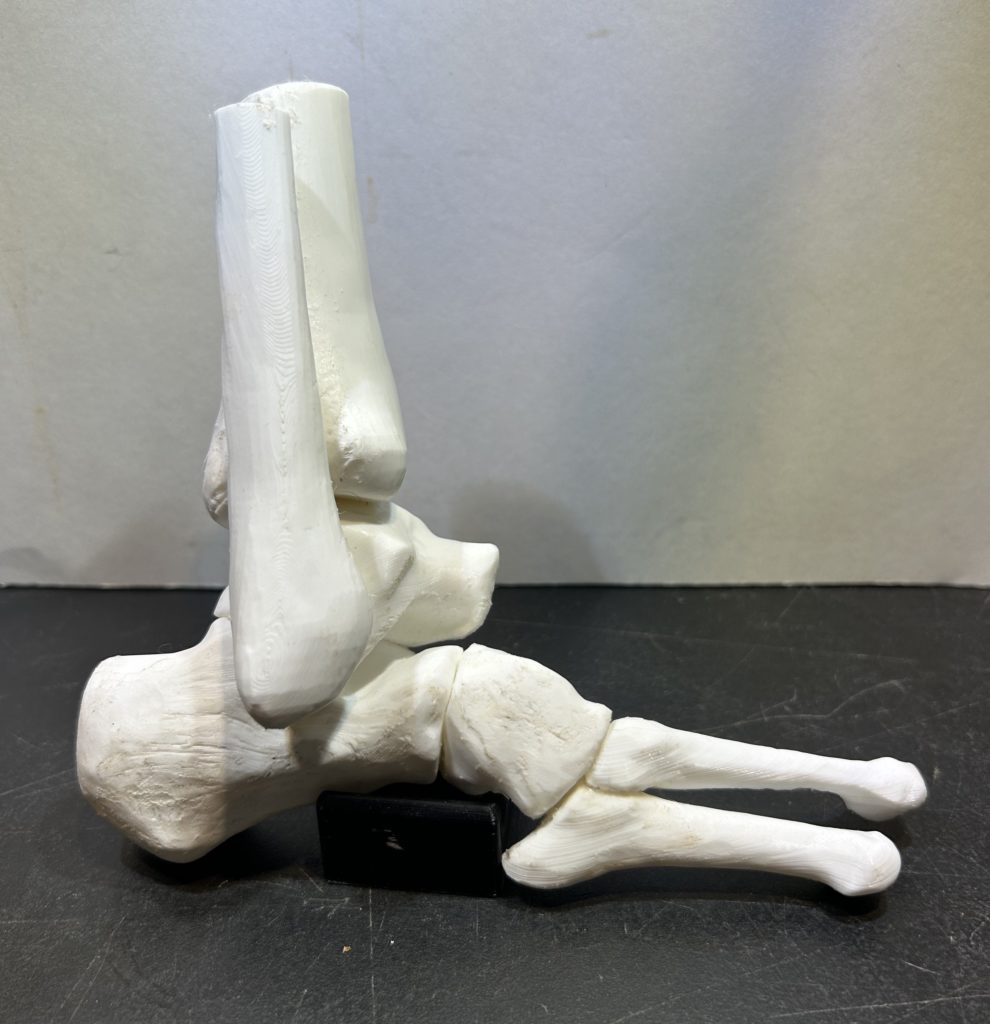
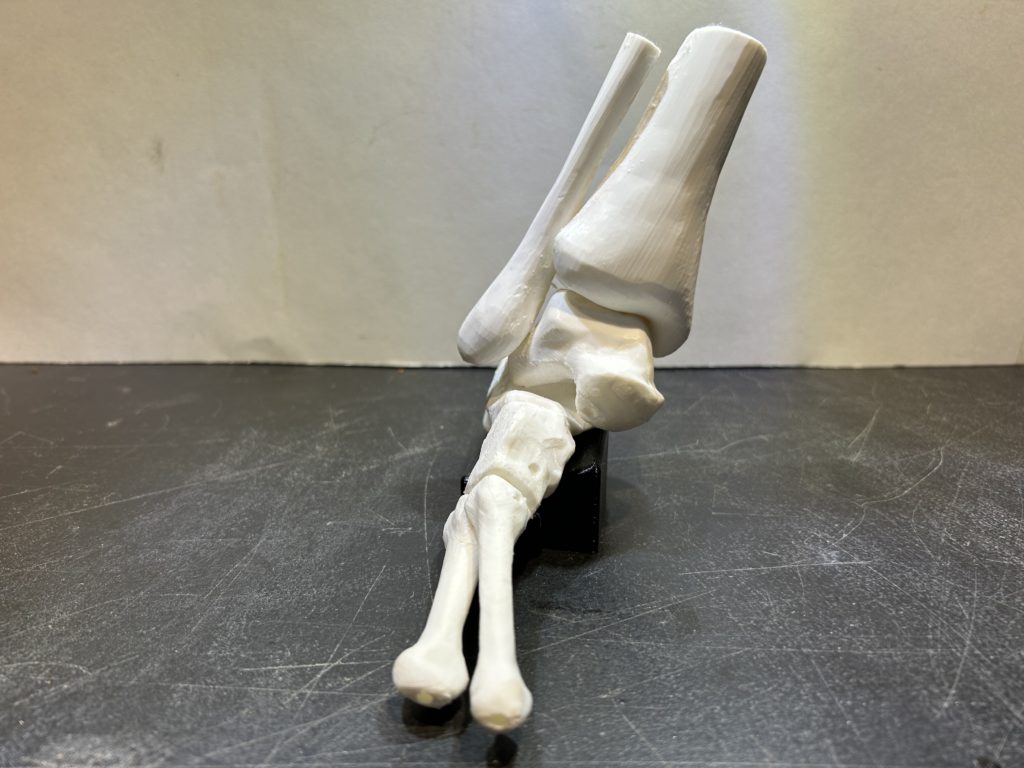
Stance and Lateral Stability are dominantly compressional foot functions. There is not a great deal to discuss about them beyond their skeletal attributes, which can be easily observed. However, Forefoot Gait, being dominantly tensional can be studied in greater depth.
Subfunction Within Forefoot Gait
(Vector Rotating: Tension >> Compression)
- Forefoot, or Ball Gait, utilizes the large calf muscles that attach to the heel through the Achilles Tendon. This force is further transmitted down into the first three toes through muscles, tendons, and ligaments. It is the shock absorption mechanism of gait. Underneath this major muscular system is a system aligning the big toe making subtle force corrections within a movement to drive our forward momentum to the left or right.
- This function is driven by the Tibialis Posterior and the Fibularis Longus muscles, whose insertion points cross at the top of the big toe, thereby allowing for rotation of the big toe contact surface with the ground.
- In this formation, the sole is a mere triangle aligned with the pad of the big toe and two points right behind it at the base of the first metatarsal, as can be seen in the pictures below. This base has two sesamoid bones at the tendon insertions for the two muscles, forming the other two points of the triangle.
- This function is particularly hard to access if our forefoot gait function is underused due to wearing supportive shoes over a long period or other factors. If this is the case it may be painful to activate and take some time to develop. With practice, you will begin to feel this engagement, facilitating much more dynamic variations in a forward movement.
- The Asymmetrical Tonic Neck reflex may play a key role in this function.
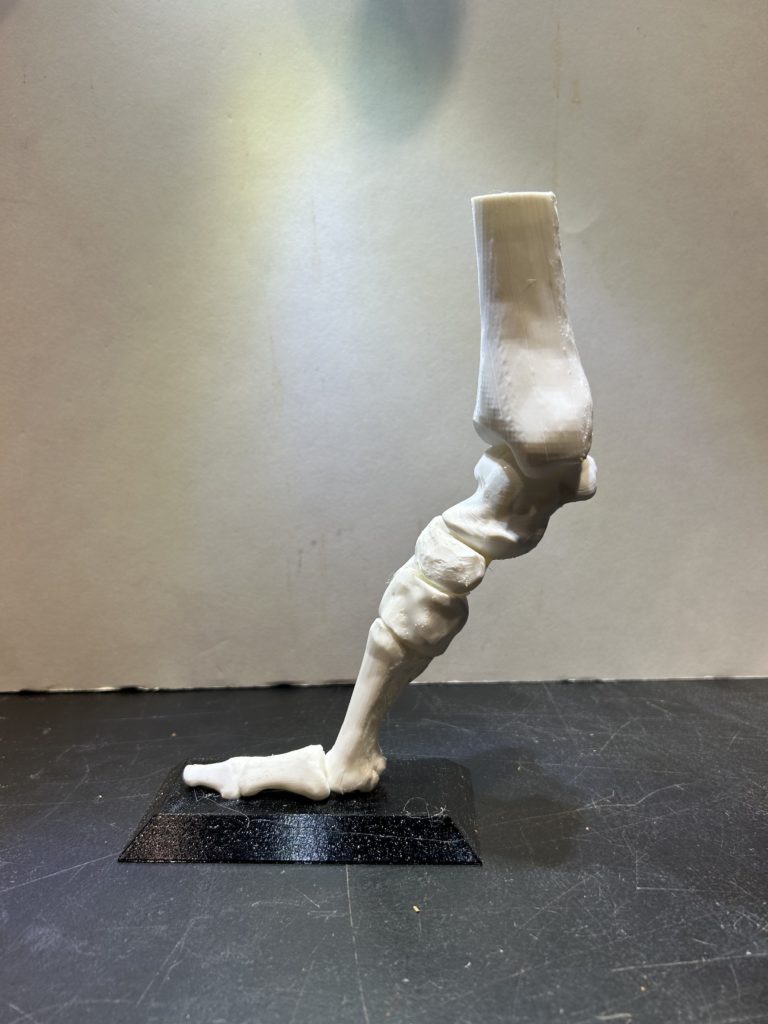
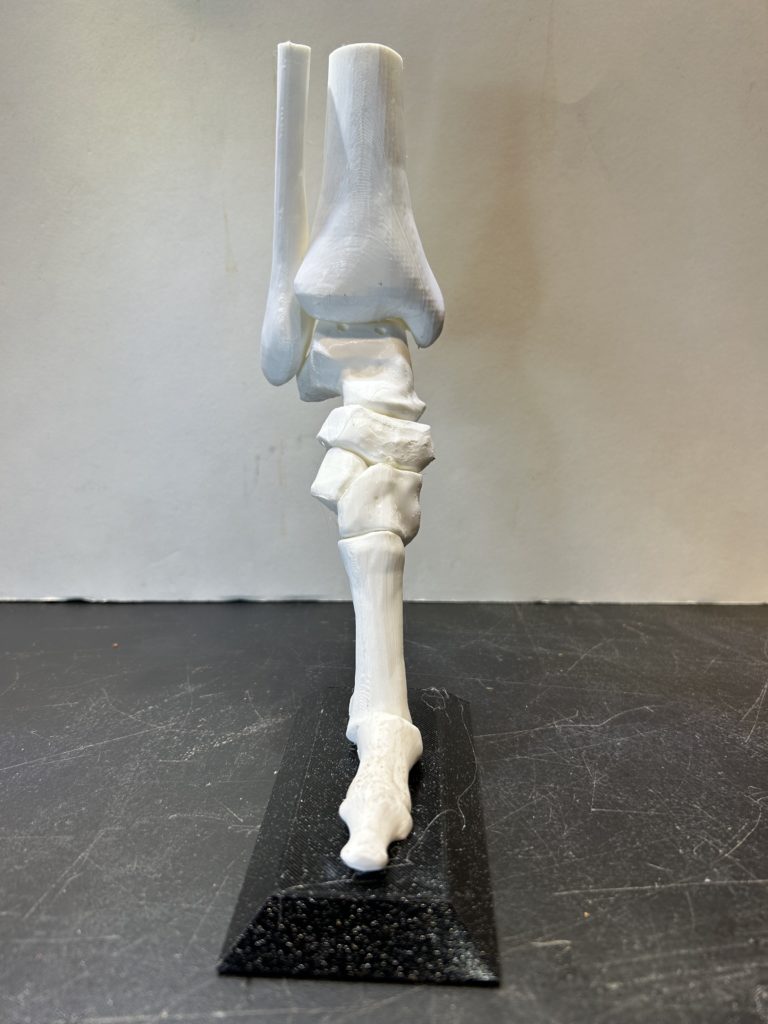
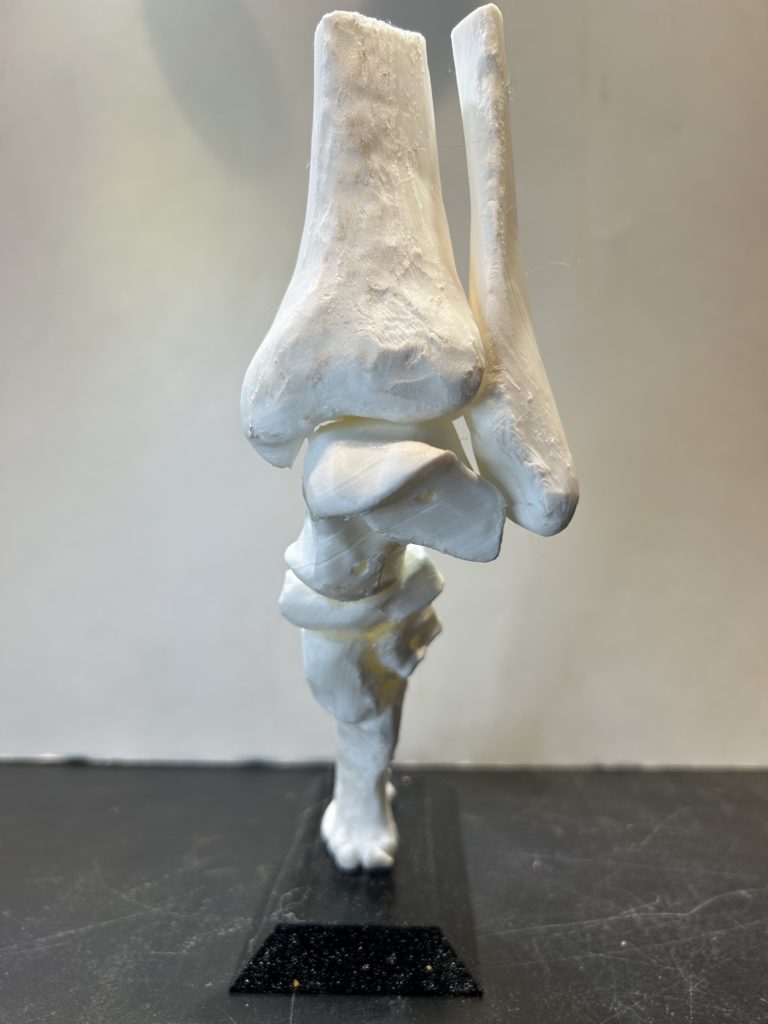
EXAMPLES OF FULLY UTILIZED FOOT DYNAMICS
Here is an example of all of these individuated functions of the feet in action:
https://www.instagram.com/reel/C0zJBVSM15a/?igsh=MTc4MmM1YmI2Ng%3D%3D
Here are example exercises for the feet:
https://www.instagram.com/reel/C4dtFbwtztD/?igsh=MTBlZjE4YzMxOA%3D%3D

